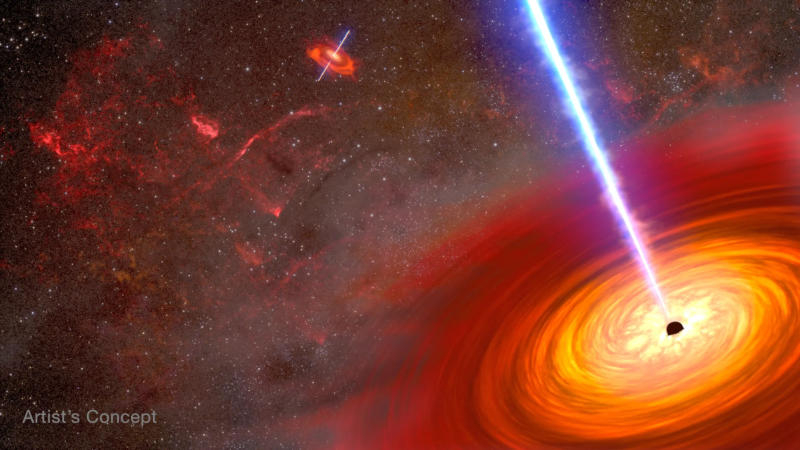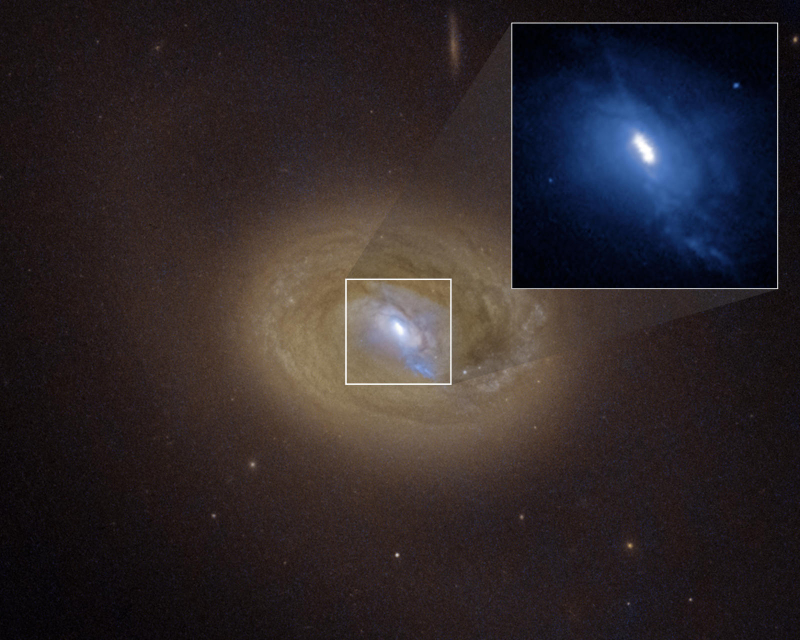A group of American scientists using the Chandra and Hubble space telescopes have discovered a pair of supermassive black holes located relatively close to Earth that are awaiting a merger.

Image source: nasa.gov
Two supermassive black holes are located in the merger galaxy MCG-03-34-64 at a distance of 800 million light-years from us – the objects themselves are separated by only 300 light-years. They actively absorb gas and dust in the surrounding area, producing emissions of radiation and matter – jets. These regions are called active galactic nuclei, and they can be so bright that their light cancels out the light of all the stars in their galaxies.
This pair is located at a great distance from Earth, but it is still the closest pair of active galactic nuclei, which are observed in several bands: for Hubble it is visible light, and for Chandra it is X-ray radiation. Previously, a pair of supermassive black holes located closer to each other than this one had been discovered, but their presence could only be confirmed in the radio frequency range.

In the future, the distance between the two objects will decrease. As they rotate around each other, they produce ripples in space and time – gravitational waves. This causes their angular momentum to decrease, causing the black holes to move closer together. In about 100 million years, they will be so close to each other that their enormous gravity will take over, after which they will collide and merge.
It is believed that double active galactic nuclei were common in the early Universe, when mergers of galaxies themselves were more common. Now scientists have a unique opportunity to observe this phenomenon – the binary system was discovered thanks to a happy accident: Hubble discovered it among data indicating a high concentration of oxygen in a small region MCG-03-34-64. Subsequently, the same region was studied using Chandra.
Astronomers did not stop there – they requested archives of observations from the ground-based VLA (Very Large Array) complex in the US state of New Mexico, and they showed that a pair of supermassive black holes also emits powerful radio waves. Hubble also discovered a third bright source of light in this area: it is assumed that this is gas that was affected by a plasma jet released by one of the black holes, like a stream of water from a garden hose hitting a pile of sand.